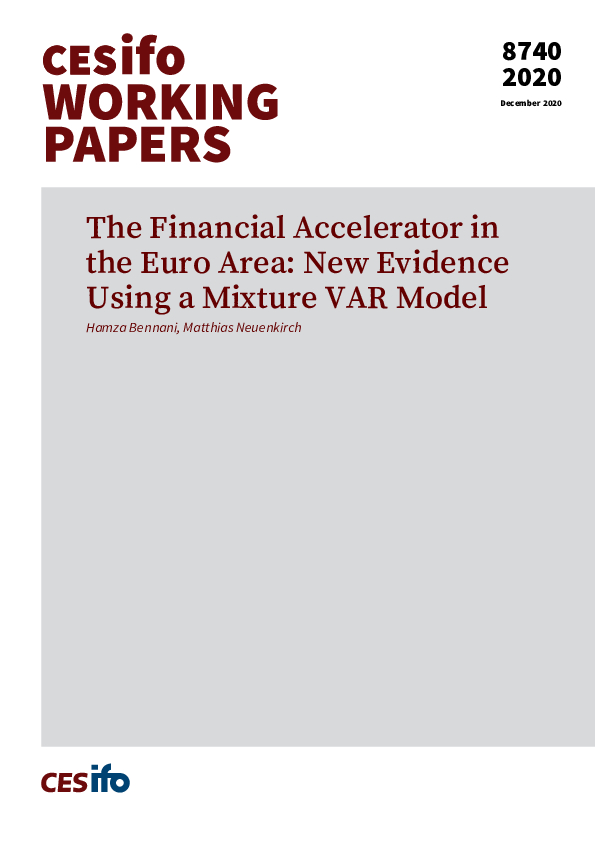The Financial Accelerator in the Euro Area: New Evidence Using a Mixture VAR Model
CESifo, Munich, 2020
CESifo Working Paper No. 8740

We estimate a logit mixture vector autoregressive model describing monetary policy transmission in the euro area over the period 2003Q1–2019Q4 with a special emphasis on credit conditions. With the help of this model, monetary policy transmission can be described as mixture of two states (e.g., a normal state and a crisis state), using an underlying logit model determining the relative weight of these states over time. We show that shocks to the credit spread and shocks to credit standards directly lead to a reduction of real GDP growth, whereas shocks to the quantity of credit are less important in explaining growth fluctuations. Credit standards and the credit spread are also the key determinants of the underlying state of the economy in the logit submodel. Together with a more pronounced transmission of monetary policy shocks in the crisis state, this provides further evidence for a financial accelerator in the euro area. Finally, the detrimental effect of credit conditions is also reflected in the labor market.
Monetary Policy and International Finance
Empirical and Theoretical Methods